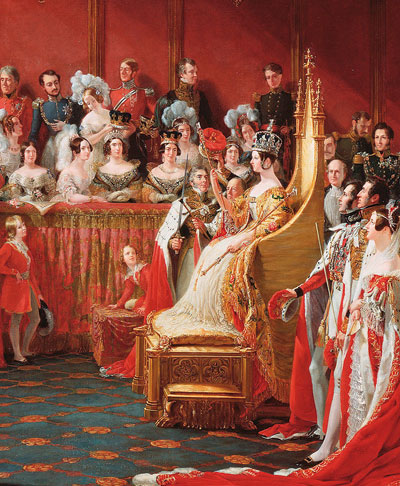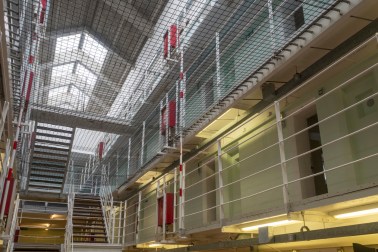The Coronation Chair currently stands all spruced up, following last year’s conservation, under a crimson canopy, by the west entrance to Westminster Abbey. The sovereign has used this throne during the actual ceremony almost continuously since the coronation of Henry IV (1399). The oldest dated piece of English furniture (1297-1300) made by a known artist (Walter of Durham) to survive has been given the comprehensive study it deserves by Warwick Rodwell, with supplementary chapters on its most recent conservation by Marie Louise Sauerberg and its current display by Ptolemy Dean.
Not only does the book cover the design, construction and decoration of the chair, but also the subsequent adaptations and mishandlings of both chair and stone, their hold on antiquarian and popular imagination, and all the political shenanigans of the 20th century.
The Coronation Chair was originally commissioned by Edward I to house the sacred stone, on which the Kings of Scotland had been crowned in the abbey of Scone, and placed in the Chapel of St Edward the Confessor in Westminster Abbey. Regarded as sacred because Jacob supposedly used it as a pillow at Bethel (Genesis 28: 18), it formed an integral part to the chair: the sovereign originally sat on it during the act of coronation, until a wooden seat was added — by 1685 at the latest, the year James II was crowned.
In 1727 Richard Roberts made a new plinth and seat and four carved lion supports for George II’s lavish coronation. The medieval pinnacles at the back of the chair were temporarily replaced with new ones for George IV’s coronation in 1821. When they in turn were removed, the chair was left, according to Edward Brayley, ‘in a more dilapidated state than before…’ However, George IV was not the only ‘delapidator’: the chair is littered with graffiti dating from about 1715 until 1815, including one that states, ‘P. Abbott slept in this chair 5:6 July 1800’.
In 1887 the Ministry of Works applied an ugly dark brown varnish to the chair in preparation for Queen Victoria’s Golden Jubilee, which severely damaged the remains of medieval gilded decoration. The 20th century witnessed two main acts of vandalism, the suffragette bomb of 1914 and the stealing of the Stone of Scone in 1950. Mercifully, the former left no irreparable damage, but Scottish Nationalists caused structural damage in wrenching the stone from underneath the chair on Christmas Day, 1950: they also managed to drop and break the stone.
The aftermath of this incident gave rise to a series of ministerial discussions about the status of the stone: The perverse arguments of Lord Jowitt, the Lord Chancellor, that the Stone belonged to the government rather than the Dean and Chapter of Westminster Abbey, and had never served any religious function, would later prove useful for John Major and Michael Forsyth, the Secretary of State for Scotland, who sent the stone back to Scotland, where it is now displayed in the Crown Room at Edinburgh Castle, on the understanding that it would be returned to Westminster for coronations. (What happens if Scotland votes for independence in 2014?)
The gesture generated little gratitude from Scotland’s politicians, and deep dismay for anyone with a respect for historical objects. Rodwell compares it with ‘cutting the face out of the Mona Lisa and sending that back to Italy while keeping the body in the Louvre.’
Nevertheless, the Coronation Chair itself mains in all its glory at Westminster Abbey as ‘a subtle and infinitely valuable item’, in the words of Ptolemy Dean; ‘its history cannot be faked, it is entirely irreplaceable’.






Comments